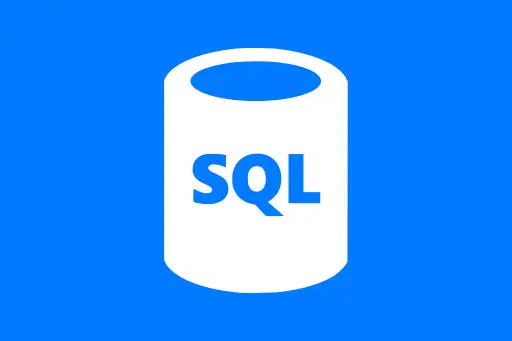Overview of Spark MLlib
Overview of Spark MLlib
Spark MLlib is Apache Spark’s built-in machine learning library. It provides scalable, distributed machine learning algorithms for classification, regression, clustering, recommendation, and more.
MLlib is designed to work efficiently with large datasets distributed across multiple machines. This makes it perfect for real-world big data machine learning tasks that can't be handled by tools running on a single computer.
Why Use Spark MLlib?
- Handles large-scale datasets that don’t fit into memory
- Built on top of Apache Spark — supports distributed data processing
- Works with DataFrames, making it easy to clean and transform data before applying models
- Supports building ML pipelines with multiple stages like preprocessing, modeling, and evaluation
Common Tasks Supported by MLlib
- Classification: Predict categories (e.g., spam or not spam)
- Regression: Predict numerical values (e.g., housing prices)
- Clustering: Group similar data points (e.g., customer segmentation)
- Recommendation: Suggest products or content
- Dimensionality Reduction: Reduce the number of features using techniques like PCA
Real-Life Example: Predicting Flight Delays
Suppose an airline wants to predict whether a flight will be delayed based on data like weather conditions, day of the week, departure time, etc. Using Spark MLlib, we can process millions of flight records and build a classification model to predict delays.
Question:
Why not use regular Python libraries like scikit-learn for this task?
Answer:
Scikit-learn works great for small datasets that fit in memory. But when the dataset is massive (like millions of flight records), it becomes inefficient or fails. Spark MLlib distributes the workload across a cluster, making it scalable and faster.
How MLlib Works in Spark
MLlib uses the concept of a pipeline, which is a sequence of steps applied to data. Each step is either a Transformer (e.g., scale or encode data) or an Estimator (e.g., train a model).
A typical MLlib pipeline includes:
- Reading and cleaning the data
- Indexing or encoding categorical features
- Assembling all features into a single vector
- Training the model (e.g., logistic regression)
- Evaluating the model
PySpark Example: Logistic Regression with MLlib
Let’s walk through a simple example using PySpark to train a logistic regression model.
Dataset:
We’ll use the classic Iris dataset (converted for binary classification for simplicity).
from pyspark.sql import SparkSession
from pyspark.ml.feature import VectorAssembler, StringIndexer
from pyspark.ml.classification import LogisticRegression
from pyspark.ml import Pipeline
# Create Spark session
spark = SparkSession.builder.appName("MLlibIntro").getOrCreate()
# Load sample dataset
data = spark.read.csv("https://raw.githubusercontent.com/uiuc-cse/data-fa14/gh-pages/data/iris.csv", header=True, inferSchema=True)
# Convert to binary classification: Setosa vs Non-Setosa
data = data.withColumn("label", (data["species"] != "setosa").cast("int"))
# Assemble features into a single vector
assembler = VectorAssembler(inputCols=["sepal_length", "sepal_width", "petal_length", "petal_width"], outputCol="features")
# Create Logistic Regression model
lr = LogisticRegression(featuresCol="features", labelCol="label")
# Create pipeline
pipeline = Pipeline(stages=[assembler, lr])
# Split data
train_data, test_data = data.randomSplit([0.8, 0.2], seed=42)
# Train model
model = pipeline.fit(train_data)
# Predict on test data
predictions = model.transform(test_data)
# Show predictions
predictions.select("features", "label", "prediction", "probability").show()
+-----------------+-----+----------+--------------------+ | features|label|prediction| probability| +-----------------+-----+----------+--------------------+ |[4.9,2.5,4.5,1.7]| 1| 1.0|[0.007,0.993] | |[5.0,2.0,3.5,1.0]| 1| 1.0|[0.022,0.978] | |[5.2,3.5,1.5,0.2]| 0| 0.0|[0.950,0.050] | |[5.7,2.8,4.1,1.3]| 1| 1.0|[0.028,0.972] | +-----------------+-----+----------+--------------------+
Explanation of the Code
- SparkSession: Entry point to run PySpark code
- VectorAssembler: Combines multiple feature columns into a single vector
- LogisticRegression: Trains a binary classifier
- Pipeline: Bundles all steps together so they can be reused or deployed
- fit: Trains the model on training data
- transform: Makes predictions on test data
Summary
Spark MLlib enables you to build scalable and efficient machine learning models for big data. It offers tools for classification, regression, clustering, and pipelines. With PySpark, beginners can write Pythonic code that runs efficiently on a distributed cluster.
In upcoming lessons, we will dive deeper into MLlib pipelines and explore other algorithms like Decision Trees and KMeans.
Next Topic ⮕Feature Engineering with VectorAssembler and StringIndexer in PySpark













Comments
Loading comments...